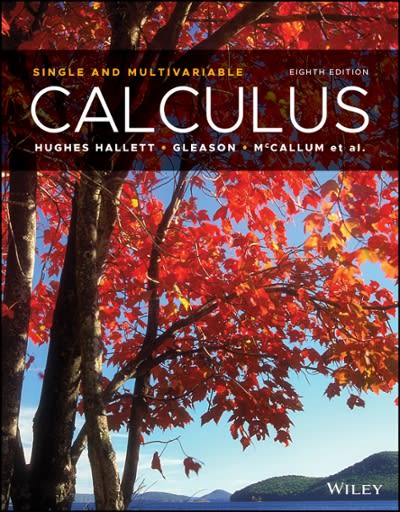Question
Suppose that you work for conservation of natural areas at the Bureau of Land Management. Your section concerns the effect of wildfire on natural areas.
Suppose that you work for conservation of natural areas at the Bureau of Land Management. Your section concerns the effect of wildfire on natural areas. Your supervisor asked you to analyze a temporal trend in wildfire. In particular, she is interested in the following associations
The accompanied data file contains the number of wildfires, total burned area, and burned area per fire in the U.S. from 2000 to 2019. Refer to Correlations and Regressionsin JMP Learning Library.
Question 1. Using JMP, create three scatter plots which show each association (year and number of wildfires, year and total burned area, and year and burned area per fire). Clearly label the graphs. Note that year should be on the x-axis. Attach the scatterplot to this report.
Question 2. Using the scatter plot created in Question 1, perform visual assessments. Describe the trend, strength, and shape of each association.
Association between year and number of wildfires:
Association between year and total burned area:
Association between year and burned area per fire:
Question 3. Using JMP, calculate correlation coefficient (r) and coefficient of determination (r2) for each association and determine the values in the below table
Variables | Correlation coefficient (r) | Coefficient of determination (r2) |
Year and number of wildfires | ||
Year and total burned area | ||
Year and burned area per fire |
Page 1 of 2
Question 4. Based on the visual assessments and correlation coefficient in questions 2 and 3, select one of the three associations which is both strong and linear? Circle one. (5%)
- Association between year and number of wildfires
- Association between year and burned area
- Association between year and burned area per fire
Question 5. Using JMP, calculate the regression equation for the association you have selected in question 4. Note that year is the independent variable. Write down the equation.
Question 6. Interpret the slope of the regression equation you have reported in Question 5 in words. Note that reporting the value of the slope is not sufficient. You need to describe what the value implies.
Question 7. Based on the coefficient of determination you calculated in Question 3, what percentage in the variability in the dependent variable is explained by year?
%
Question 8. Based on your analysis from Questions 1 to 7, what would you report to your supervisor? Is there any trend in number of wildfires, area burned, and/or area burned per wildfire between 2000 to 2019?
Step by Step Solution
There are 3 Steps involved in it
Step: 1

Get Instant Access to Expert-Tailored Solutions
See step-by-step solutions with expert insights and AI powered tools for academic success
Step: 2

Step: 3

Ace Your Homework with AI
Get the answers you need in no time with our AI-driven, step-by-step assistance
Get Started


